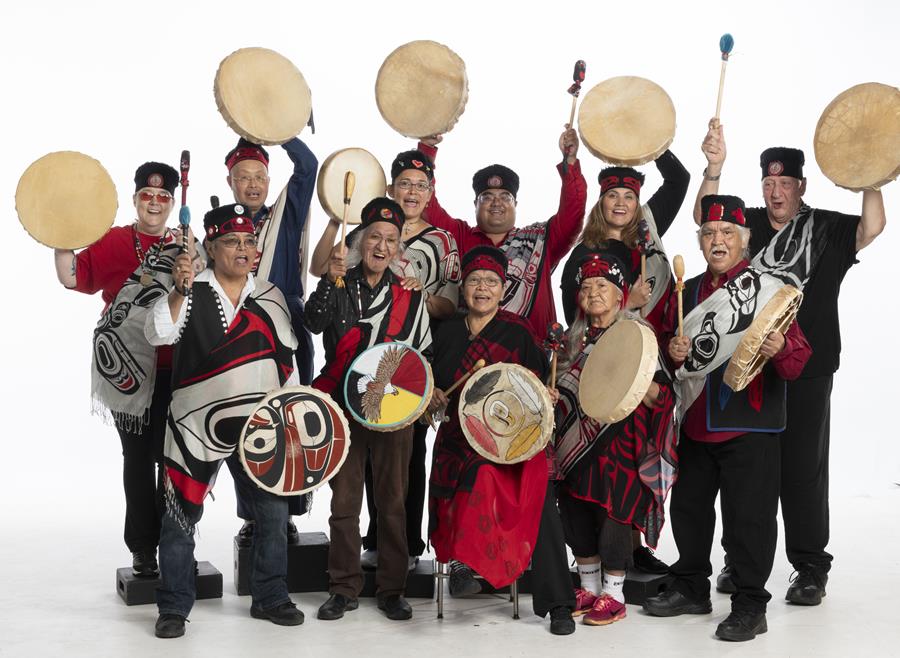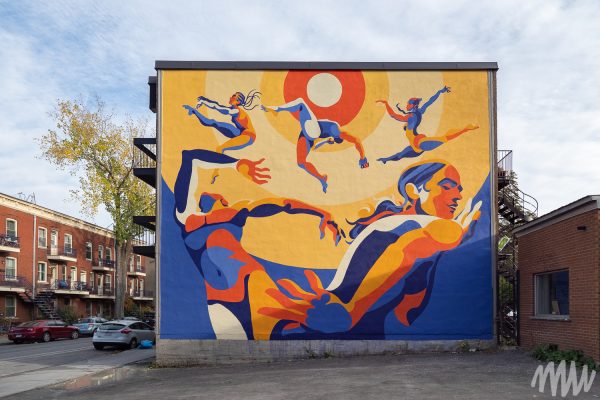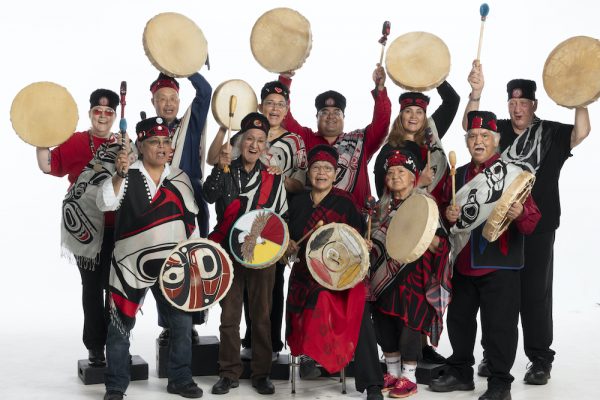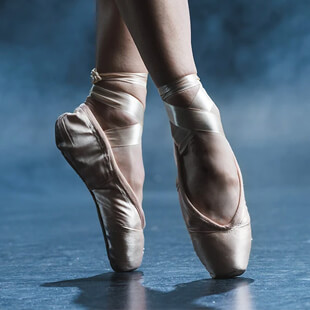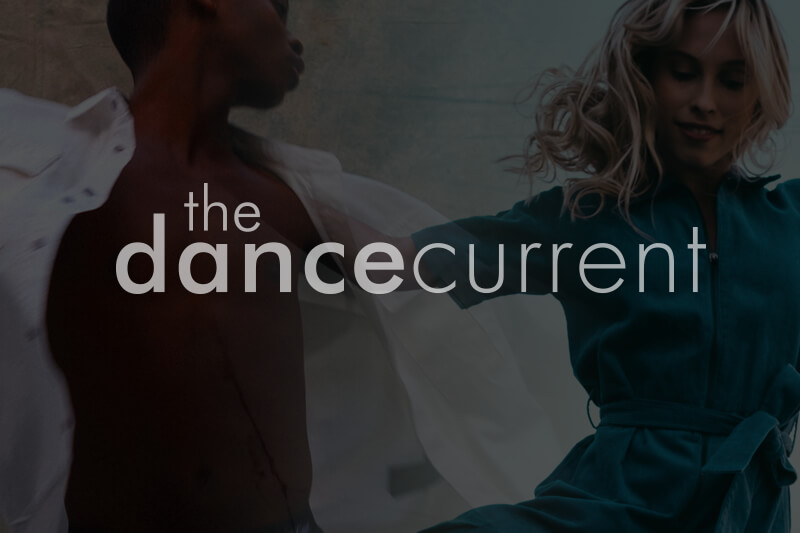This article was originally published in the Fall 2021 edition of the Current Society newsletter.
Anne Dion: How would you describe the Heart of the City Festival to someone who’s never heard of it before?
Savannah Walling: We’re in the 18th year of the festival. And the mandate of the festival is to promote and present and facilitate the development of artists and art forms, cultural traditions, history, activism, people and great stories about the Downtown Eastside… It usually happens over two weeks. It includes many, many partners, over 100 often, and it includes theatrical dance, music, concerts; it includes history walks and talks; it includes visual arts exhibits and films, conversations, workshops and also commemorative events and ceremonies.
Terry Hunter: A shorter version is that the mandate of the festival is to promote the stories and people of the Downtown Eastside community and all the cultural activity that happens in all the many neighbourhoods of the community. It’s also a bridge-building force to build bridges and connections between people within the community, and also to the larger community outside of Vancouver and the lower mainland and beyond.
SW: …And we’ve also wanted to provide a kind of window into the community that’s honest and truthful to the larger community outside of us to help reduce some of the stigma that can get attached to an inner-city community.
TH: We support the spectrum of involvement in the arts from people who just love to participate in the arts, or who are maybe beginning in the arts, to semi-professional to professional to cultural treasures.
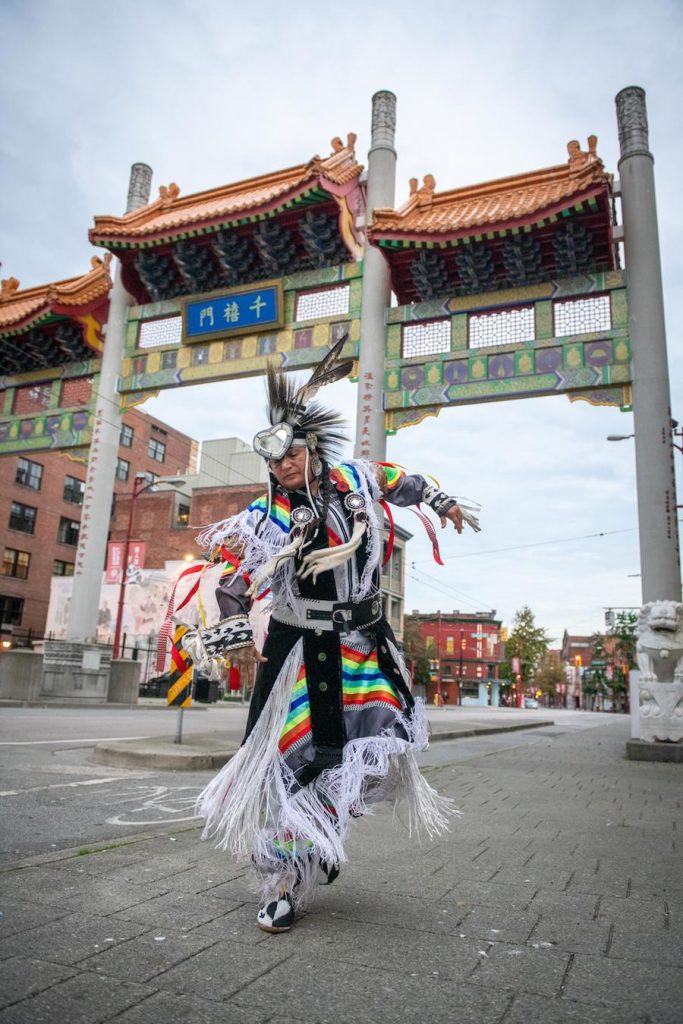
AD: So similarly, how would you describe the Downtown Eastside neighbourhood to someone who’s never been there?
TH: This is an ongoing conversation even today between Savannah and I. People typically think of the Downtown Eastside as the poor area — Main and Hastings — and the particular stretch of blocks along mainly Hastings street, about four or five blocks. …
From the perspective of the festival, when we say the Downtown Eastside, we’re actually using a definition that encompasses a much larger area. And that runs from the centre of the city about a mile and a half east towards Simon Fraser University, and then, from the waterfront, up about a mile to what’s called Terminal Avenue. So it’s quite a large district, and the city calls this district the Downtown Eastside district. So that’s the definition that we have used.
This district includes many neighbourhoods … It also includes Chinatown; it includes the Powell Street area, which is the home of the Japanese Canadian community; Strathcona, which is a residential neighbourhood … Simon Fraser University and Gastown, … So the whole neighbourhood is actually around 19,000 people. So it’s quite large.
Our mandate is to cover all these many neighbourhoods, but also to build bridges and connections with them. And we do give primary focus to the low income neighbourhoods because they’re the ones that are under stress. And they don’t have the opportunities to participate in the arts that some of the other neighbourhoods do. And so we really centre them. And that centring also brings us to centring a lot of Indigenous people, because a large portion of the people who live in that Main and Hastings area are of Indigenous ancestry.
“We’ve also wanted to provide a kind of window into the community that’s honest and truthful to the larger community outside of us to help reduce some of the stigma that can get attached to an inner-city community.”
SW: This whole historical district is the area where Vancouver first started as a city, as well as having been a site where there were Indigenous villages and seasonal villages, etc., that were part of it. So it has a long history. …
Acknowledging the historical roots and cultural traditions, founding communities and cultural communities is also a big part of what we’ve been doing….
TH: It’s a very multi-layered community.
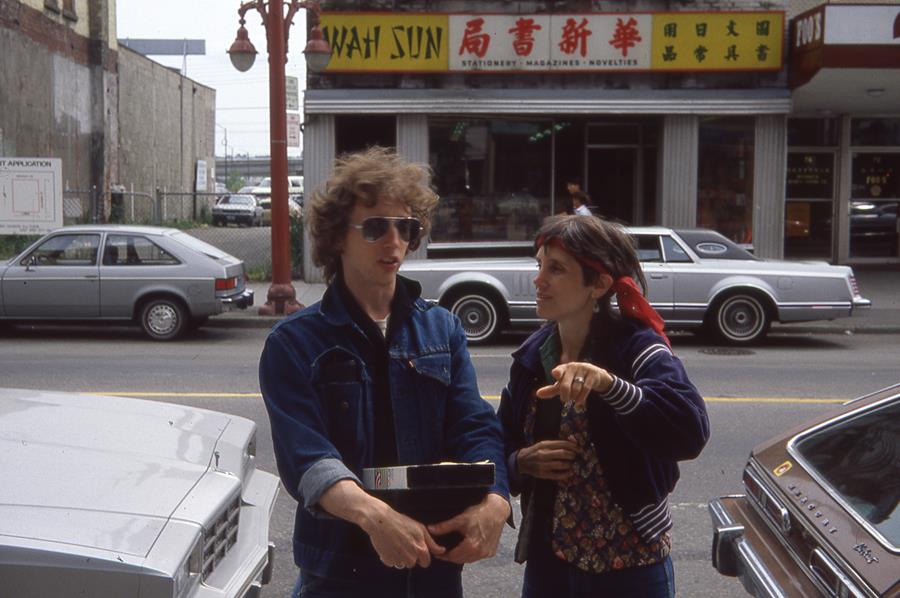
SW: Which is part of the enduring fascination for it, and part of why we’ve lived here for I guess over 40 years.
AD: Wow, so you’ve both lived there for that long?
TH: Yeah, we’ve lived here since 1974.
SW: We were working in the neighbourhood when we were part of Terminal City Dance, the avant-garde dance collective, before it evolved. And we formed what became Vancouver Moving Theatre. And we’ve also raised a son during that time as well in the community.
TH: And that time period was very influential for us in terms of developing the festival. So the festival emerged in 2004. But that emergence was also rooted in the work that we were doing earlier in the 1970s. … At that time in the 1970s, we were very interested in interdisciplinary work, … it was kind of a creative hothouse. And the other major component of that work, too, was, it was also very intercultural, we were very interested in being influenced by cultural practices from other places of the world. Most of the work that was going on at that time in the 70s, was very influenced by Western culture that came from Europe. And we were influenced by that, but we also started to be very influenced by Chinese art forms, Japanese art forms, African art forms.
SW: And Indigenous [art forms].
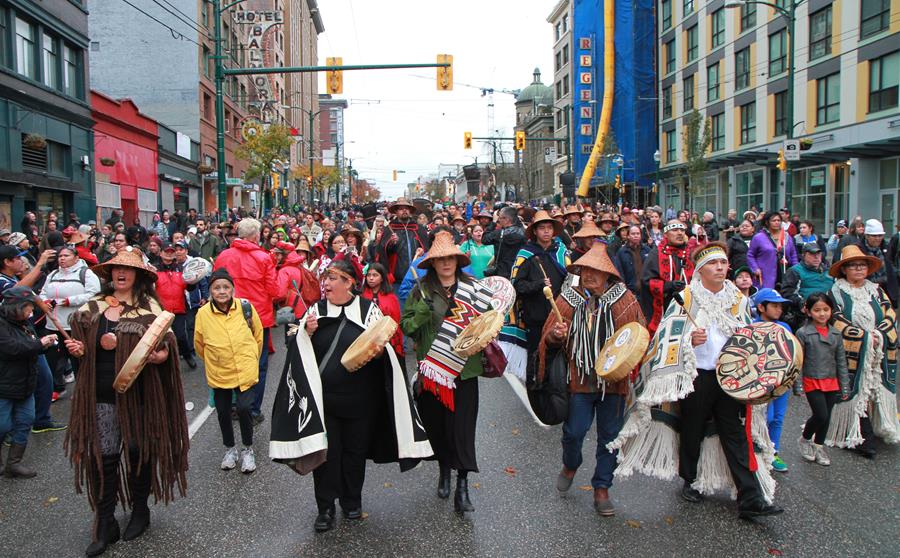
AD: How did the festival come to be? What was its aim?
SW: Vancouver Moving Theatre partnered with the Carnegie Community Centre and Japanese Hall in the year 2003 to produce a very large-scale community play: In the Heart of a City: the Downtown Eastside Community Play. And that was a big project that involved over 80 performers and hundreds of volunteers in the making of it. It had such a big impact and a real desire for people in the community to continue on [once] that festival was given birth. …
TH: We had been approached by the Carnegie Community Centre, which is right at Main [and] Hastings — when you think of the Downtown Eastside, they are the centre of the community. And they were celebrating their 100th anniversary, and they wanted to do [an] activity. And at that time, there was a lot of tension within the larger community because of the deaths that were happening around drug use. I think maybe 1,000 people had died within the previous couple of years, from heroin overdoses and other, you know, really heavy drugs. And there was an initiative at that time to establish a harm reduction centre in the community, which also involved safe injection sites. So there was a lot of disagreement within the various communities … there were protests in the street and there were anti-protesters who are confronting the protesters.
And so Carnegie was thinking about what they wanted to do to celebrate the 100th anniversary. They came up with this idea of doing a very large community play that brought together the diverse people and neighbourhoods.
And they had been very inspired by another community play that happened a couple of years earlier, up in the interior of BC in the town of Enderby… in Enderby, there [are] the white settlers living in the village and then across the river was the First Nation community and there was very little dialogue, very little connection. And Cathy Stubbington … she had this idea that she wanted to put together a big play, and bring together these two communities. That really brought the two communities together in a very, very positive way and then had a lot of ripple effects that were very positive after that.
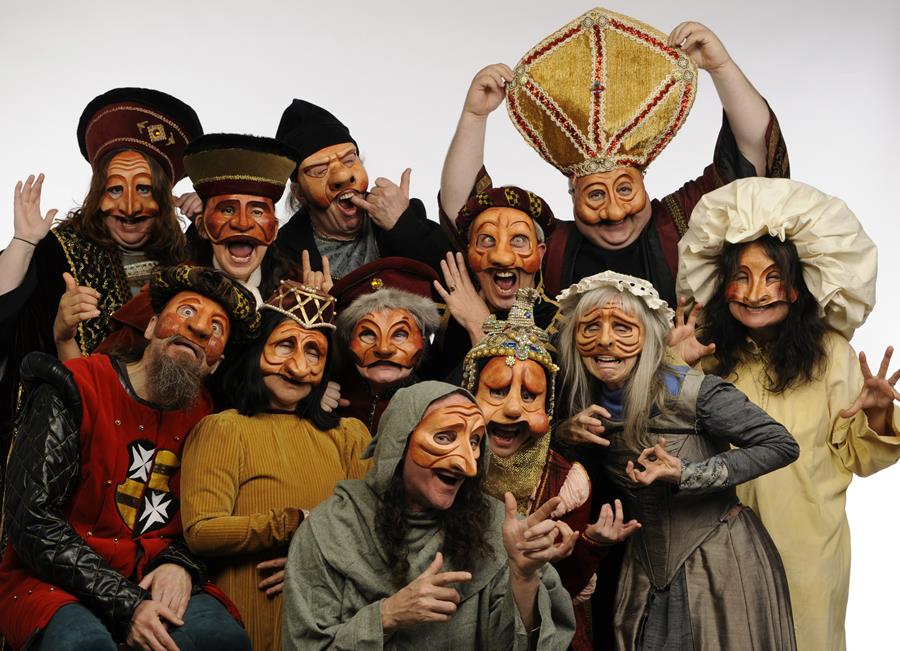
And [Carnegie Community Centre] invited us to work with them to put on this community play, which we did in the year 2000 … for a two-week run, sold out every night, standing ovations every night, and a cast of 80 people … but they were what we would call amateur performers, people from the community. And it really reflected the diversity of the community. … reflected also the economic diversity within the neighbourhood. And it was a very, very positive experience for the participants, and the community was so … they were so overwhelmed by the impact of the play and the stories that were being told and so kind of proud of the community for doing this.
And so out of that, the question became, ‘how do we continue this?’…
[The festival is] very much about seeding and supporting the development of cultural practice within our neighbourhood.
SW: It’s emerged out of years of trust building. And years of people, community members, coming to feel that the festival is something that belongs to them as well. And it’s expressive of the community.
TH: That’s a very important point … there’s a very strong sense of ownership. Savannah and I also come to this with the value that we don’t own the festival. We are stewards for the festival on behalf of the community. … It’s built on a large web of partnerships with non-arts organizations and arts organizations and individual artists.
“It’s emerged out of years of trust building. And years of people, community members, coming to feel that the festival is something that belongs to them as well.”
SW: The various disciplines and components of the festival over the years [have] come to include cultural work of different kinds, including canoe landings with protocol that have happened, some installation of carvings with protocol, among other things. We are on the unseeded ancestral homelands of the Musqueam and Squamish and Tsleil-Waututh, and these are all strong Indigenous living presences around us, … that’s part of the world that we’re working in. …
Part of what we’re doing by living here in the community and working here, it’s like a process of deep listening.… All year-round, we’re listening and witnessing the community, and seeing concerns coming forward or suggestions made to us, etc.
TH: Savannah and I have been very much mentored by our community. We’ve really much been turned inside out and see the world with fresh eyes because of this community.
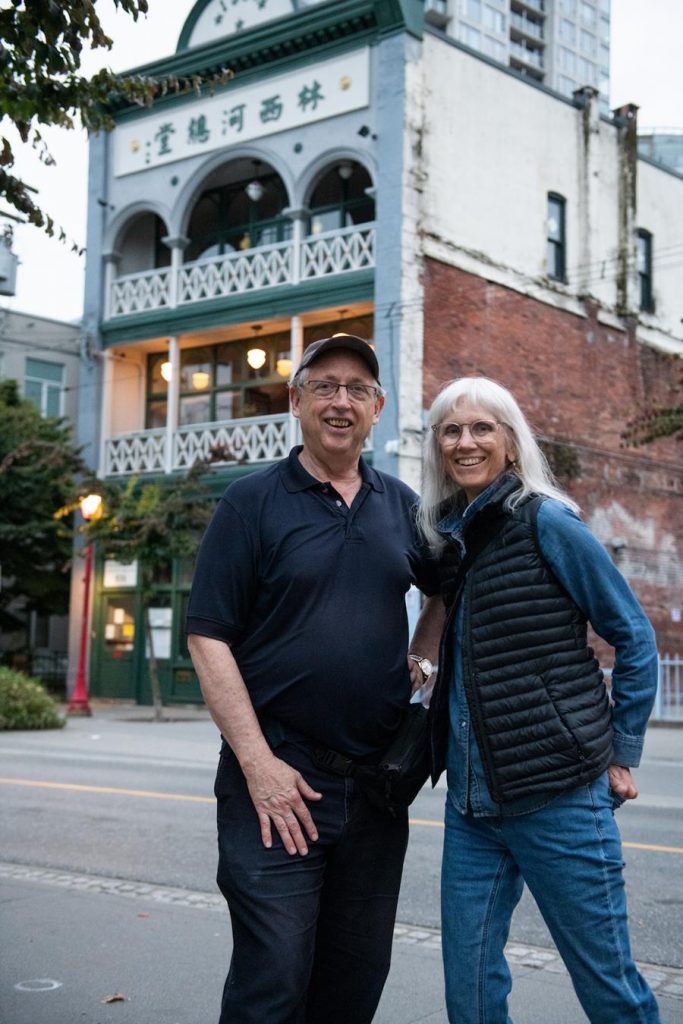
AD: So you’ve obviously been in theatre for a long time, both of you… In what ways have you seen theatre affect the community that it takes place in?
SW: There is a feeling of pride in what’s coming forth from this neighborhood that wasn’t there in the early years that we were working. … I think it’s been changing some of the narratives about the story so that even though there’s still a lot of the media stigmatizing, a large amount of the media also makes a point of pointing out that that’s not the only story, that it’s a complex and rich community.
“There is a feeling of pride in what’s coming forth from this neighbourhood that wasn’t there in the early years that we were working.”
TH: The practice itself is changing; who’s doing the practice is changing; how it’s presented is changing; where it’s emerging from is changing. …
A lot of the content now is very issue-driven. And that has an impact on influencing policymakers and decisions that are made by all three levels of government. And also really changing funding bodies and their priorities and the focus of what they want to support.
And I’ve also seen a lot of people who we’ve worked with in the early years … get engaged in activism within the neighbourhood, joining boards, volunteering in the community, and becoming really active citizens of the neighbourhood or participants in the neighbourhood, working to contribute to the betterment of the neighbourhood. That’s been a very strong impact on people’s participation in theatre practice in the community.
This is an email for subscribers and supporters of The Dance Current. Thank you for supporting Dance Media Group with your subscription and donations. Your contributions allow us to continue advocating for dance in all forms across the country.
Tagged:
